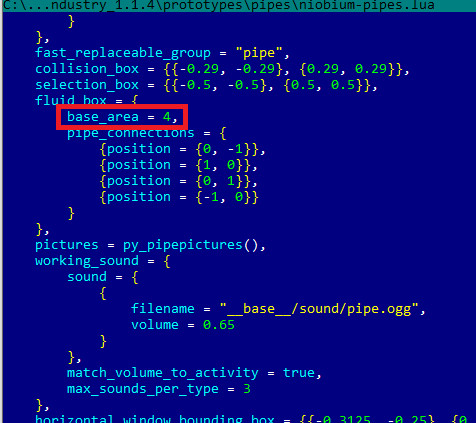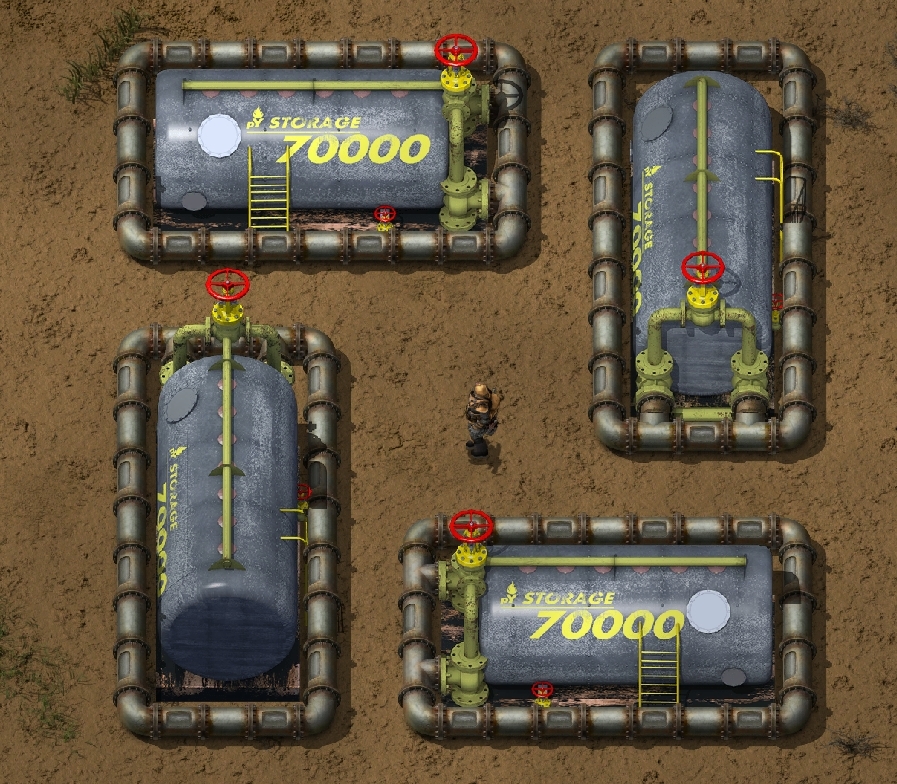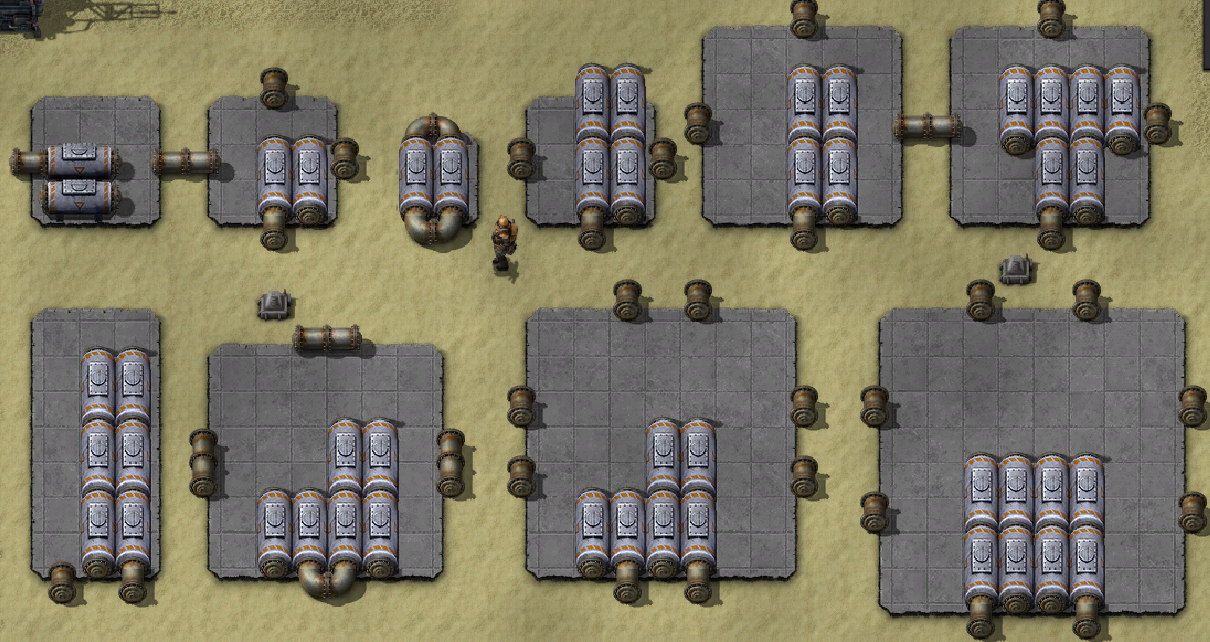Anon2k wrote: Fri Mar 29, 2019 12:55 pm
Niobium pipes break fluid mechanics.
...
I know this is a late reply but this is by game design.
First and foremost, as far as rate of flow goes, all "naturally aspirated" (I.E, not pumps, not machines, not one way pipes etc) fluid boxes that share the same base level (height above sea level) depend entirely on how much of the fluid box is full.
So for example, a 100 unit pipe that has 50 fluid in it is 50% full.
A 100,000 unit tank that has 50 fluid in it is 0.05% full.
A 400 unit pipe with 50 fluid in it is 12.5% full.
Fluids will flow from one fluid box (A) to another (B) when A has a higher fill percentage than B.
As such, a vanilla pipe with 50 fluid will drain into a niobium pipe that had 50 fluid in it. Even though the niobium pipe already has 50 fluid.
With this knowledge, you can at a glance, determine just how full your entire fluid network is. (between pumps and machines etc)
The speed at which fluids travel is determined by the fluids viscosity (which from what i have seen, is at the default 0.59 for every fluid) and the pipes current fill level vs it's neighboring pipe.
So if one pipe is 51% full and the next pipe is 49% full, the flow will be miniscule between them. Whereas a pipe that is 100% full encounters a neighbor that is 0% full will almost immediately balance out their fill levels. (Overshooting slightly)
For each tick this imbalance exists (say one pipe is 100% full and the next is 0% full every tick) there's a bonus to flow rate. This is why pipes "overshoot"/"slush" a bit. The maximum flow rate with the current (old) fluid mechanics is somewhere around 97.5 units/tick. Regardless of how big the pipe or storage tank is.
In the 100% -> 0% example, 50 units of fluid is moved to balance the two fluid boxes percentages out. And another 47.5 is moved as a bonus because flow has been going that way for some 200 ish ticks. (IIRC)
All that goes out the window as soon as pumps are introduced, pumps will (try to) suck 100% of the fluid from one pipe and deposit it into the output fluid network.
Pumps can store 200 units of fluid so they can only ever suck 200 units per tick and deposit it at the output. So their maximum flow rate is 200 units/tick which is twice as fast as naturally aspirated pipes. However, it doesn't matter if the input is 50% full and the output is 95% full, the pump WILL push 200 units/tick if there is room for the units of fluid at the output.
So if you set up this:

Assuming the final destination has room for it...
The vanilla pipes will transfer 100 units/tick always.
The niobium pipes will transfer 200 units/tick always.
DO NOTE The actual figures are not 100 or 200 units/tick because there's actually pipes between the pumps. Even a single pipe will affect the flow rate negatively, even a tank will however tanks are so massive compared to the pumps that the flow rate is barely affected with huge storages.
Even if you string pumps together end to end, the output fluid box of a pump will affect the flow somewhat... Unless you mod the pump is such a way that the output has a higher base level than the rest of the network.
It's all Factorio fluid mechanics and this explains why niobium pipes are slower at long distances. You will notice the difference once you've put pumps after every underground iron pipe and at every bend to get as close to 100 units/tick as you possibly can. And then when that isn't enough flow rate for you, you'd go for niobium pipes to reach the pumps maximum of 200 units/tick.
And if you are using bob's logistics or some other pump mod, the niobium pipes are capable of handling 24,000 units/second. If you use better pumps than that you'd start using storage tanks between each pump... Or find a bigger pipe.





